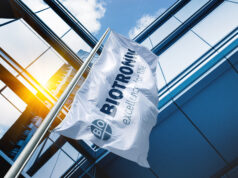
Data presented during the 2017 Transcatheter Cardiovascular Therapeutics (TCT) meeting (29 October–2 November, Denver, USA), according to a press release, provide further evidence of the safety and efficacy of Biotronik’s bioresorbable scaffold Magmaris.
Pooled 12-month data from the BIOSOLVE-II and BIOSOLVE-III clinical trials highlight high procedural success and the continuous absence of late definite or probable scaffold thrombosis.
During a presentation at TCT, Michael Haude (Lukas Hospital, Neuss, Germany) showed angiographic follow-up of a total of 97 patients from BIOSOLVE-II and -III. The pooled in-segment late lumen loss remained low with 0.25±0.31mm at 12 months. The press release states that these data, together with the presented data on definite or probable scaffold thrombosis (0%) for BIOSOLVE-II at 24 months, confirm that the scaffold is a safe and effective option for patients with de novo coronary artery lesions. Moreover, the pooled target lesion failure rate of 3.3% at 12 months is comparable to second-generation drug-eluting stents.
Haude comments: “We now have another set of evidence where even when pooling BIOSOLVE-II and -III data, Magmaris shows 0% definite and probable scaffold thrombosis for up to 12 months in clinical trials. This adds to our understanding that approximately 95% of the magnesium scaffold is being resorbed within 12 months.”
“At a time when questions have been raised about poly-L-lactide (PLLA) scaffolds, we are pleased to once again report safe and efficacious results for Magmaris. These data reiterate that magnesium-based resorbable technology is entirely different in both mode of action and clinical outcomes to PLLA-based bioresorbable scaffolds. We at Biotronik remain committed to vessel restoration therapy based on magnesium technology,” comments Alexander Uhl, Biotronik vice president of Marketing, Vascular Intervention.









